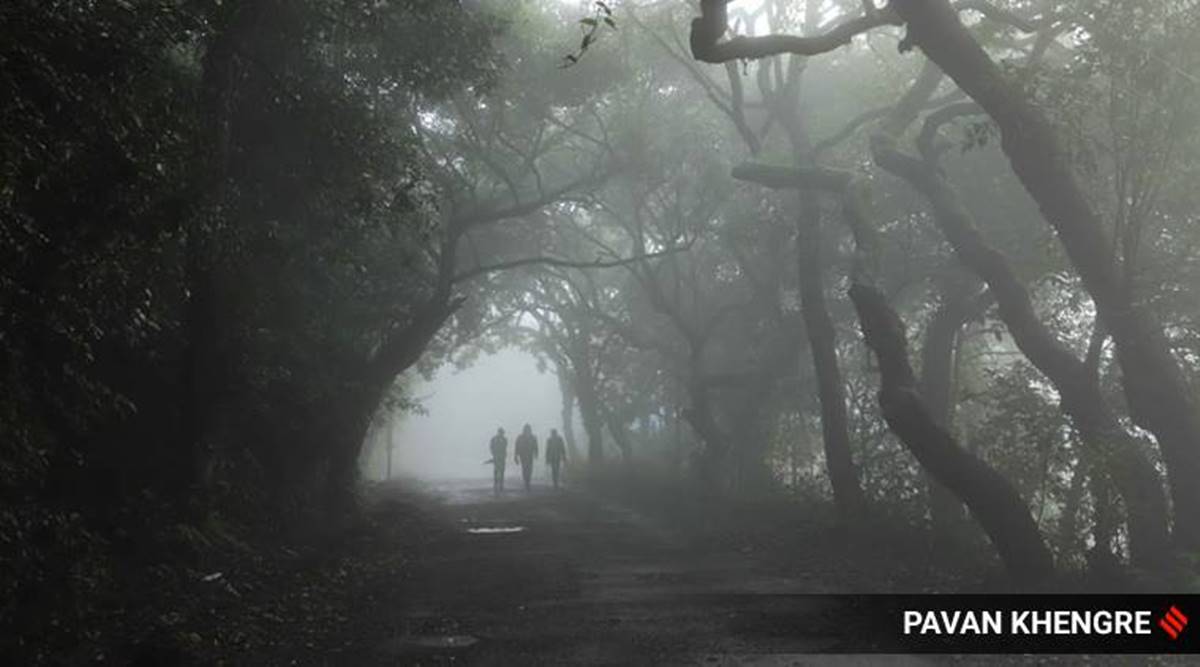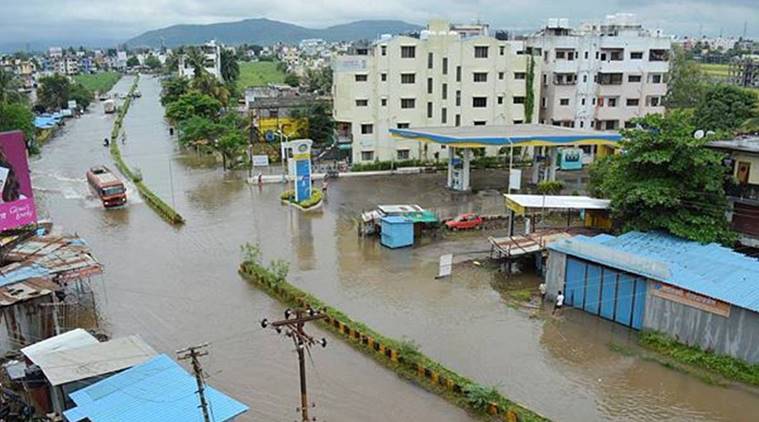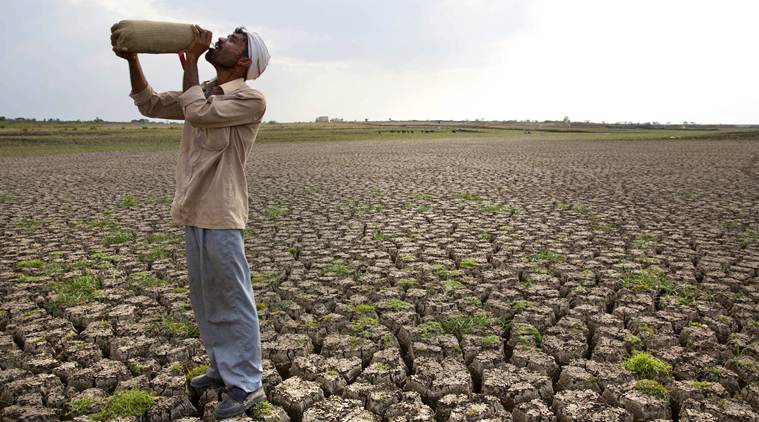 This is the first time that extreme weather event hotspots in the country have been mapped. (File)
This is the first time that extreme weather event hotspots in the country have been mapped. (File)Over 75 per cent districts in India, home to more than 63.8 crore people, are hotspots of extreme climate events such as cyclones, floods, droughts, heat and cold waves, according to a study released on Thursday by the Council on Energy, Environment and Water (CEEW).
This is the first time that extreme weather event hotspots in the country have been mapped.
The frequency, intensity, and unpredictability of these extreme events have risen in recent decades – while India witnessed 250 extreme climate events in 35 years between 1970 and 2005, it recorded 310 such weather events in only 15 years since then, the study has pointed out.
The CEEW study found that in the last 50 years, the frequency of flood events increased almost eight times. Events associated with floods such as landslides, heavy rainfall, hailstorms, thunderstorms, and cloudbursts increased by over 20 times.
 File photo of floods in Daund taluka of Pune district.
File photo of floods in Daund taluka of Pune district.
The frequency of floods surged significantly in the last two decades, it was found. Between 1970 and 2004, three extreme flood events occurred per year on an average, but after 2005, the yearly average rose to 11. The annual average for districts affected until 2005 was 19, but after 2005, on average 55 districts were affected by floods each year.
In 2019, India witnessed 16 extreme flood events, which affected 151 districts. The study found that over 9.7 crore people are currently exposed to extreme floods in India.
Six of India’s eight most flood-prone districts in the last decade—Barpeta, Darrang, Dhemaji, Goalpara, Golaghat, Sivasagar—are in Assam.
Abinash Mohanty, programme lead at CEEW and author of the study, said, “The current trend of catastrophic climate events results from a mere 0.6 degrees Celsius temperature rise in the last 100 years. India is already the fifth most vulnerable country globally in terms of extreme climate events, and it is all set to become the world’s flood capital.”
The CEEW analysis indicates that while the number of rainy days during monsoon have decreased, single-day extreme rainfall events are increasing, leading to flooding.
 Until 2005, the number of districts affected by drought was six, but after 2005 this figure rose to 79, the study pointed out.(Representational Image)
Until 2005, the number of districts affected by drought was six, but after 2005 this figure rose to 79, the study pointed out.(Representational Image)
According to the study, the yearly average of drought-affected districts increased 13 times after 2005. Nearly 68 per cent of the districts have faced droughts and drought-like situations. Until 2005, the number of districts affected by drought was six, but after 2005 this figure rose to 79, the study pointed out.
Microclimatic zones shifting
Microclimatic zones, or areas where the weather is different from surrounding areas, are shifting across various districts of India, the study has found. A shift in microclimate zones may lead to severe disruptions across sectors – every 2 degrees C rise in annual mean temperature will reduce agricultural productivity by 15-20%, it has found. Some reasons identified behind this shift in microclimatic zones is change in land-use patterns, disappearing wetlands and natural ecosystems by encroachment, and urban heat islands that traps heat locally, says Abinash Mohanty, the study's author.
Drought-affected district hotspots of India in the last decade were Ahmednagar, Aurangabad (both Maharashtra), Anantapur, Chittoor (both Andhra Pradesh), Bagalkot, Bijapur, Chikkaballapur, Gulbarga, and Hassan (all Karnataka). While the intensity of damage in terms of loss of life has reduced significantly, droughts increase uncertainties related to agriculture and rural livelihoods.
The study also found a shift in the pattern of extreme climate events, such as flood-prone areas becoming drought-prone and vice-versa, in over 40 per cent of Indian districts.
Traditionally flood prone districts such as Cuttack (Odisha), Guntur, Kurnool, Srikakulum (all AP), Mahbubnagar, Nalgonda (both Telangana), and Paschim Champaran (Bihar) have become drought-prone in recent years. States such as Andhra Pradesh, Tamil Nadu and Karnataka have also been increasingly witnessing more droughts, while floods and droughts coincide during the same season in several districts of Bihar, Uttar Pradesh, Odisha and Tamil Nadu.
“This role reversal has happened in two ways,” Mohanty said. “In some cases, districts which were flood-prone have now become drought-prone and vice versa, while many districts are facing floods and droughts simultaneously. For instance, in Gaya, half the district has been experiencing floods, and the other half drought. This trend is both unusual and alarming, and definitely requires further investigation.”
Mohanty said such swapping of weather severely hinders decision-making capacities, as the administration “may budget for and be prepared for a drought but be hit by a flood instead”.
Rajkot, Surendranagar (both Gujarat), Ajmer, Jodhpur (Rajasthan), and Aurangabad (Maharashtra) districts, among others, have experienced a shifting trend from floods to drought.